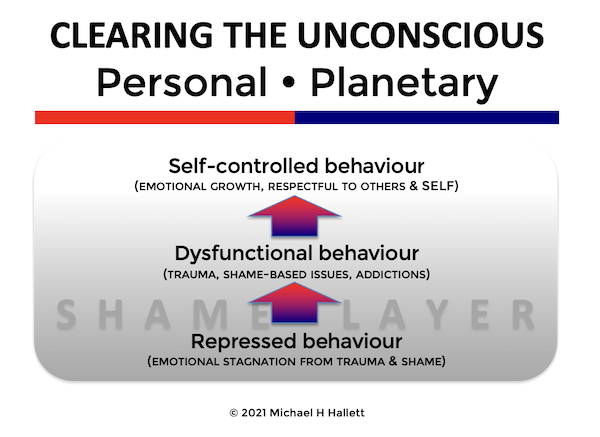My attention has recently been drawn to the 1960s Sexual Revolution, an event that has largely receded out of memory and is mostly remembered through the occasional popular song on the radio, or replays of the 1970 Woodstock documentary about the music festival at the epicentre of the ‘free love movement.’
From the perspective of sexual shame, the Sexual Revolution is perhaps the most important and identifiable marker point in the history of patriarchal civilization. It’s the tipping point at which the downfall of that civilization, spanning some 6,000 years, became unavoidable.
What was the Sexual Revolution?
Over to you, Wikipedia:
“The sexual revolution, also known as the sexual liberation, was a social movement that challenged traditional codes of behaviour related to sexuality and interpersonal relationships throughout the developed Western world from the 1960s to the 1970s. Sexual liberation included increased acceptance of sex outside of traditional heterosexual, monogamous relationships (primarily marriage).
The normalization of contraception and the pill, public nudity, pornography, premarital sex, homosexuality, masturbation, alternative forms of sexuality, and the legalization of abortion all followed.”
To which we could add, as Wikipedia does, “explicit sex on stage and screen.”
Wow! That’s some revolution. What to make of it?
Success or failure?
Opinions on the legacy of the 1960s Sexual Revolution are divided. They depend largely on how people feel about the list of normalised behaviours that it precipitated. Some feel that society has gone way too far, others that the revolution stalled and has not gone far enough.
Academics haggle over whether the revolution was male- or female-driven and whether it empowered women or simply furthered their sexual exploitation. Others opine that the 70s crises, disillusionment with the previous decade’s counterculture and the AIDS pandemic all contributed to nullifying its effects.
Yet there are deeper patterns, and it’s ultimately on these patterns—spanning thousands of years rather than decades—that this social movement should be assessed.
Multiple revolutions
While we tend to think of the 1960s as THE Sexual Revolution, it was only the most notable of several such movements that began in the late 1900s, fundamentally in step with the rise of feminism. The first reported use of the term ‘sexual revolution’ was in Russia, in the wake of the Communist revolution.
Western sexual prudery peaked in the 19th century, the Victorian age in Britain, leaving in its wake the highly anti-sexual notion of childhood innocence.
The two World Wars, the Roaring Twenties and rock’n’roll—slang, possibly naval, for sex—all contributed to a gradual loosening of trouser zippers and panty elastic. In the 1960s all these anti-establishment forces broke through on a mass scale.
Personal and planetary
This is all part of a long-term process of clearing the human unconscious. It’s unfolding at both the individual (personal) and societal (planetary), micro and macro, levels.
This process has three stages:
- Repressed behaviour—emotional stagnation from trauma and shame.
- Dysfunctional behaviour—trauma, shame-based issues, addictions, acting out.
- Self-regulation—emotional and sexual growth, respectful to others and to self.
 This journey begins with traditional patriarchal sexual rules—externally applied regulations that are designed to keep sexual behaviour in check through stagnation. These regulations are ‘one size fits all’ with breaches subject to dire punishment.
This journey begins with traditional patriarchal sexual rules—externally applied regulations that are designed to keep sexual behaviour in check through stagnation. These regulations are ‘one size fits all’ with breaches subject to dire punishment.
The Bible tells us that if “there is no proof that his bride was a virgin, the men of the town will take the woman to the door of her father’s house and stone her to death.” (Deuteronomy 22:20-21 CEV)
The important point to note is that the punishment must be carried out at “the door of her father’s house” to shame the whole family and encourage wholesale compliance.
You don’t have to look too far to find similar sexual violence still being handed out. While such practices have disappeared from the so-called developed world, instances of murder due to sexual jealousy and possession are still relatively regular.
The genie is out of the lamp
With the 1960s Sexual Revolution, the sexual genie trapped in the lamp broke out.
This is stage two of the process, a messy stage where individual sexual dysfunctions—the inevitable result of thousands of years of sexual shame—erupt out of repression and are splattered across our news feeds, if not our lives.
Porn, sex addiction, affairs, masturbation, same-sex attraction, ‘open’ marriages. Any force in nature that is under compression, when uncompressed, explodes.
This stage is inevitable, unavoidable, unpredictable, and—compared with the six millennia of sexual stagnation that preceded it—will be relatively short. Centuries, not millennia.
The breaking of mass sexual repression only occurred some 60 years ago, yet much of the world’s population is still in stage one. Few have yet understood that stage three—sexual self-regulation—even exists.
Self-regulation
Sexual self-regulation means sexual decision-making that is spontaneous yet consensual, respectful to all participants (including those indirectly affected) and focused on long-term emotional nurturing rather than short-term genital gratification.
This will not be universally popular as it gains wider recognition. The patriarchy dies hard.
In The Function of the Orgasm, Wilhelm Reich—who understood this three-phase journey a century ago—writes: “No other point of my theory has endangered my work and existence as much as my contention that self-regulation is possible, naturally present, and universally feasible.”
The dam has broken. The genie is out of the lamp. It’s not going back. We’re all going to have to ride out the storm. Let’s make love on the lawn before the rain comes.
Next steps
For further resources on sexuality, both free and paid, please click on this image.
Photo: public domain


